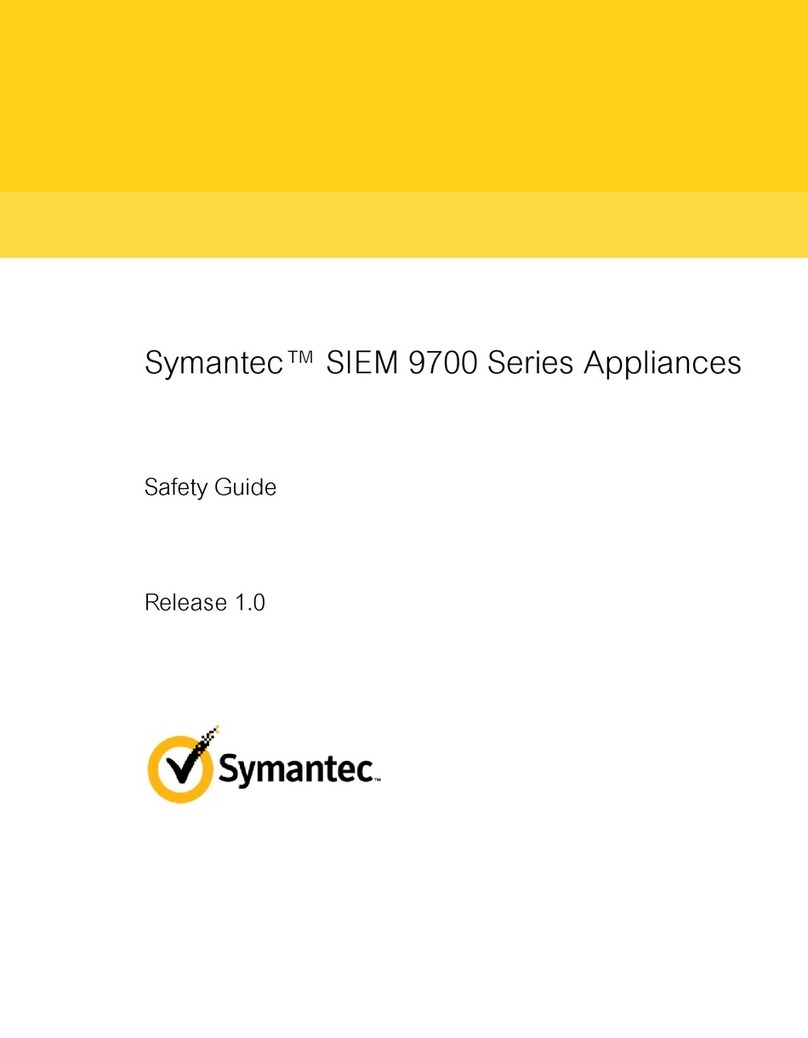
2016 Symantec Corporation This document may be freely reproduced & distributed whole & intact including this copyright
notice.
1.
Introduction
1.1
Purpose
This document is a non-proprietary Cryptographic Module Security Policy for the
SSL Visibility Appliance models SV1800-C, SV1800B-C, SV1800-F, SV1800B-F,
SV2800, and SV2800B. The non-B models can
operate with the 3.8.2F, 3.8.4FC, or
3.10 firmware version. The B-models require the 3.10 firmware version to operate.
This policy was prepared as
part of the Level 2 FIPS 140-2 validation of the
module, and may freely be
reproduced and distributed in its entirety (without
modification).
Federal Information Processing Standards (FIPS) 140-2, Security Requirements for
Cryptographic Modules, specifies the U.S. and Canadian Governments’
requirements for cryptographic modules. The following pages describe how the
SSL Visibility Appliance meets these requirements and how to operate
the device
in a mode compliant with FIPS 140-2.
More information about the FIPS 140-2 standard and validation program is
available on the National Institute of Standards and Technology (NIST)
Cryptographic Module Validation Program (CMVP) website at: http://
csrc.nist.gov/groups/STM/cmvp/index.html.
In this document, the SSL Visibility Appliance models SV1800-C, SV1800B-C,
SV1800-F, SV1800B-F, SV2800, and SV2800B are referred
to as the hardware
modules, the cryptographic modules, or the modules.
1.2
References
This document only deals with the operation and capabilities of the SV1800-C,
SV1800B-C, SV1800-F, SV1800B-F, SV2800, and SV2800B
within the technical
terms of a FIPS 140-2 cryptographic module security policy.
More information on
the SV1800-C, SV1800B-C, SV1800-F, SV1800B-F, SV2800, and SV2800B is
available from the following sources:
•
The Symantec website, www.symantec.com, contains information on
the
full line of products from Blue Coat.
•
The Symantec customer website, https://bto.bluecoat.com, contains
product documentation, software downloads, and other information on
the full line of products from Symantec.
The CMVP website http://csrc.nist.gov/groups/STM/cmvp/index.html
contains contact information for answers to technical or sales-related questions
for the module.
1.3
DocumentOrganization
This Security Policy is one document in the FIPS 140-2 Submission Package. In
addition to this document, the Submission Package contains:
•
Vendor Evidence
•
Finite State Machine
•
Other supporting documentation as additional references
•
Validation Submission Summary




























